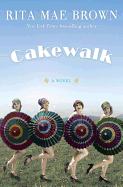
| Publisher: | Bantam | |
| Genre: | General, Fiction, Sagas, Lesbian, Historical | |
| ISBN: | 9780553392654 | |
| Pub Date: | October 2016 | |
| Price: | $27 |
| Fiction |
by Rita Mae Brown
Since Rubyfruit Jungle, her debut novel in 1974, the prolific Rita Mae Brown has written 13 novels, numerous anthropomorphic mysteries, five nonfiction titles, three poetry collections and a novella. Cakewalk marks her delightful return to her charming Runnymede series featuring the boisterous, feisty and ever-battling Hunsenmeir sisters, Louise and Julia (aka Wheezie and Juts). The Runnymede novels don't need to be read in any specific order because they were not written in chronological order. The duo was introduced in Six of One, a 1978 novel that spanned eight decades and included a bevy of characters living in Runnymede, a city straddling Maryland and Pennsylvania on the Mason-Dixon line. The sisters returned as octogenarians in Bingo, and Loose Lips was set in 1941 when the sisters were in their 30s. The novella The Sand Castle is set during a single day in 1952.
Cakewalk spans six months in 1920, when Wheezie and Juts are teenagers and their mother, Cora, works as a housekeeper for the town's beautiful and aristocratic lesbian Celeste Chalfonte. Although Brown warns, "This is not a plot-driven book," readers will have no complaints with the fast-paced action of bed-hopping as Celeste's longtime lover Ramelle becomes pregnant and decides to marry the father--Celeste's brother, Curtis. An agreeable arrangement is met after a couple more lovers are added to the mix.
Cakewalk is both nostalgic and outrageous; a feel-good novel told by an expert storyteller who delights in creating colorful and quirky characters and subverting readers' expectations. --Kevin Howell, independent reviewer and marketing consultant
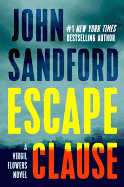
| Publisher: | Putnam | |
| Genre: | General, Suspense, Crime, Fiction, Mystery & Detective, Thrillers | |
| ISBN: | 9780399168918 | |
| Pub Date: | October 2016 | |
| Price: | $29 |
| Mystery & Thriller |
by John Sandford
After dealing with dognappings in 2014's Deadline, Minnesota Bureau of Criminal Apprehension agent Virgil Flowers investigates catnappings in Escape Clause, his ninth outing in John Sandford's Prey spinoff series.
The cats in this case are no household pets; they're a pair of endangered Amur tigers stolen from the Minnesota Zoo. Flowers fears they'll be slaughtered for parts to use in illegal traditional medicines.
But the first body he encounters is human, a small-time crook linked to the stolen tigers. Then another corpse surfaces. And yet another person goes missing. Flowers realizes he's up against someone who intends to kill not only the tigers, but anyone who gets in the way of a deadly get-rich scheme.
Though the crimes in this novel are no joke--a subplot involves the exploitation of illegal Mexicans in the workplace--the appeal lies in the humor Sandford gives his eccentric characters. Sporting long blond hair and cowboy boots, Flowers is sometimes underestimated by others as a law enforcement officer, but readers know he's smart, competent and fair. His sidekicks are two other BCA agents, who resemble "Mafia thugs," but Flowers points out they'd do well in Hollywood with that look. The cool but complex Catrin Mattson, another colleague (Field of Prey), begs for a spinoff series of her own. Flowers's girlfriend, Frankie, has a sister who's dangerously self-centered, but Flowers's relationship with Frankie is still going strong, just like this series. --Elyse Dinh-McCrillis, blogger at Pop Culture Nerd
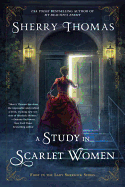
| Publisher: | Berkley | |
| Genre: | Historical - Victorian, Fiction, Romance, Historical - General, Mystery & Detective, Historical, Women Sleuths | |
| ISBN: | 9780425281406 | |
| Pub Date: | October 2016 | |
| Price: | $15 |
| Mystery & Thriller |
by Sherry Thomas
A Study in Scarlet Women opens on a scandal: the young Charlotte Holmes is caught in bed with the married Roger Shrewsbury--by his wife, mother and a gaggle of society ladies quick to gossip, no less. Charlotte remains unperturbed in the face of public scrutiny, however, and is prepared to face the consequences of her actions. Fleeing her family's home, she sets out to make a life of her own, despite the odds stacked against her as a single woman without connections in a time when upper-class women were taught to aspire to nothing more than marriage. But when Lady Shrewsbury turns up dead and suspicions are cast on Charlotte's sister for her murder, Charlotte is forced to re-engage with the life she thought she'd left behind for good--this time under the guise of one Mr. Sherlock Holmes, crime-solver extraordinaire.
Charlotte is no ordinary Victorian woman, waiting to be saved from a life of spinsterhood--nor are the women she surrounds herself with. They are strong and independent female takes on classic Holmes characters, determined to forge their own way in life: Charlotte posing as a man named Sherlock, aided by Mrs. Watson, widow of one Mr. John Watson. In so casting her characters, Sherry Thomas (The Luckiest Lady in London) has succeeded in crafting a story inspired by the Holmes canon that never feels derivative. On the contrary: A Study in Scarlet Women is a fresh, female-driven historical mystery and the promising start to a new series of Charlotte Holmes stories. --Kerry McHugh, blogger at Entomology of a Bookworm

| Publisher: | W.W. Norton & Company | |
| Genre: | Suspense, Fiction, Psychological, Thrillers | |
| ISBN: | 9780393292329 | |
| Pub Date: | October 2016 | |
| Price: | $25.95 |
| Mystery & Thriller |
by James Lasdun
James Lasdun's The Fall Guy begins with a summer wish to escape the burdens of everyday life and live in a dream--at least for a while. In the tradition of Goodbye, Columbus and The Great Gatsby, the novel is contained within a single season--a sensual, surreal space that seems soothingly insulated from the dangers of the world, and yet contains its own peculiar threat as a result of this disconnection. It is not long before the dream becomes nightmarish, as characters begin to unravel, morally, psychologically and otherwise.
Matthew, a depressed chef, sets out to stay with his wealthy cousin Charlie, and Charlie's cool, charismatic wife, Chloe, in their vacation home. Together, they form what Matthew feels is a perfect triangle of affection. Yet there is something precarious about their dynamic, as though with just the slightest crack, it could be revealed to be fragile or false. There is also something forced about the happiness Matthew feels with them, even if he fully believes it to be a pure and innocent admiration.
Lasdun captures the contradictions of this atmosphere with precision, describing the season as having "reached that point of miraculous equilibrium where it felt at once as if it had been going on forever and as if it would never end. The heat merged with the constant sounds of insects and re-winged blackbirds, to form its own throbbing, hypnotic medium. It made you feel as if you were inside some green-lit womb, full of soft pulsations." --Annie Atherton

| Publisher: | Tor | |
| Genre: | Fiction, Science Fiction, Cyberpunk | |
| ISBN: | 9780765388285 | |
| Pub Date: | October 2016 | |
| Price: | $11.99 |
| Starred | Science Fiction & Fantasy |
by Laurie Penny
Everything Belongs to the Future is another striking entry in an impeccably edited series of novellas published by the popular science fiction and fantasy website Tor.com. Laurie Penny's book is a miniature dystopian nightmare, conveying the sweeping horrors of a 700-page epic in a story that can be read in a single sitting.
On the surface, Everything Belongs to the Future has a simple premise not unfamiliar to science fiction readers: in the late-21st century, an anti-aging drug referred to as "the fix" has the capability artificially to extend life spans and allow users to remain young forever. Naturally, the rich hoard it for themselves, creating an oligarchy that throws lavish parties and ignores the hungry, aging lower classes. The novella is brash, topical and furious, exploring the full sociopolitical consequences of its premise and never allowing the reader to forget how tragically similar its imagined scenario is to our current unequal era: "Time is a weapon wielded by the rich, who have excess of it, against the rest, who must trade every breath of it against the promise of another day's food and shelter."
Everything Belongs to the Future centers on a small group of friends and activists determined to bring down the ruling class. Penny challenges genre conventions, introducing a double-agent protagonist who falls in love with one of the women he's spying on and undercuts his self-justifying morality at every turn, raising troubling questions about consent. The novella is a fierce, punkish read and a missile aimed at privilege in all of its forms. --Hank Stephenson, bookseller, Flyleaf Books
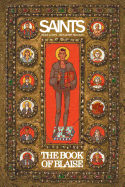
| Publisher: | Image Comics | |
| Genre: | Fantasy, Comics & Graphic Novels | |
| ISBN: | 9781632156969 | |
| Pub Date: | September 2016 | |
| Price: | $19.99 |
| Graphic Books |
by Sean Lewis, Benjamin Mackey
Deftly drawn and beautifully presented, Saints: The Book of Blaise never fails to impress. Its intricate plot involves new incarnations of Catholic saints. By turns poignant and snarky, this graphic novel--originally published as nine single-issue comic books--considers questions of faith, power and the corrupting influence of a godless and despairing Archangel Michael.
Blaise is a young heavy metal groupie with a mystical ability to heal anyone he lays hands on. He's pulled from his directionless existence and enlightened about his role as the incarnation of Saint Blaise by Sebastian, a saint who can shoot the iconic arrows that pierce his body. They head off in search of Saint Lucia, or Lucy, a young woman with candles in her hair, who uses the Earth itself as a weapon. The trio uncovers Michael's conspiracy to capture young people who exhibit saintly powers and bring forth the apocalypse.
The wry, blasphemous humor--which includes a divine painting of Jesus and several women, dubbed "Jesus Pimp" by Blaise--lends itself well to the graphic novel format. Saints is an epic of good versus evil, demons versus saints--and heavy metal. Illustrator Benjamin Mackey's color palette and line art bring the story to life, while Sean Lewis's narrative moves carefully, allowing readers fully to invest in the characters before the final conflict occurs, making for an engrossing read and visual feast. --Rob LeFebvre, freelance writer and editor
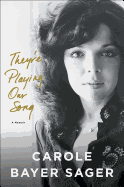
| Publisher: | Simon & Schuster | |
| Genre: | General, Biography & Autobiography, Women, Composers & Musicians | |
| ISBN: | 9781501153266 | |
| Pub Date: | October 2016 | |
| Price: | $28 |
| Biography & Memoir |
by Carole Bayer Sager
With more than 400 writing credits to her name, it's no surprise that Carole Bayer Sager's memoir, They're Playing Our Song, is as captivating, thoughtful and memorable as her lyrics--which have won her a slew of awards, including an Oscar, Grammy and two Golden Globes. She began writing songs in high school and was immediately successful. Her first record ("Groovy Kind of Love" for The Mindbenders) went to #1. Soon, she was creating hits for and with Neil Sedaka, Melissa Manchester, Peter Allen, Barry Manilow, Neil Diamond and Bette Midler (she describes writing songs with the demanding Miss M as "a ten-day They Shoot Horses Don't They?-like marathon"). A speedy lyricist, the first time she met Marvin Hamlisch, they wrote the James Bond theme "Nobody Does It Better." They began dating, and a year later they had collaborated with Neil Simon on a Broadway musical based on their lives called They're Playing Our Song.
In 1980, after things with Hamlisch ended, she began dating and collaborating with Burt Bacharach. She was his muse and they produced hits together (including the Oscar-winning "Arthur's Theme" and the AIDS anthem "That's What Friends Are For"), but their marriage was discordant. Bacharach proved to be a controlling, philandering narcissist whose casual cruel remarks chipped away at Sager's fragile self-esteem. At their wedding, he said, "I'll try," rather than "I do."
Sager's brutally honest examination of her failed marriage with Bacharach is the book's core, and it's riveting, raw and visceral. At the same time, Sager's memoir is chock-full of celebrity dish and backstage tales that will delight music fans. --Kevin Howell, independent reviewer and marketing consultant
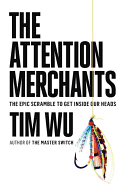
| Publisher: | Knopf | |
| Genre: | Advertising & Promotion, General, Industries, Marketing, Consumer Behavior, Media & Communications, Corporate & Business History, Business & Economics | |
| ISBN: | 9780385352017 | |
| Pub Date: | October 2016 | |
| Price: | $28.95 |
| Business & Economics |
by Tim Wu
Where do you draw the line between your private life and the world of commerce and public opinion? Do you draw it at all? Tim Wu (The Master Switch) is an influential law professor and policy advocate known for coining the term "net neutrality." His goal in The Attention Merchants is to make us aware of "the influence of economic ambition and power on how we experience our lives."
Wu begins with certain school districts that have welcomed corporate advertisers into their classrooms. The worst of this, says Wu, "is just how uncontroversial and indeed logical it has seemed to those involved." We have gradually given up on the idea of sacrosanct private spaces free of commercial and political exploitation. Wu asserts that this change is not a natural evolution but the direct result of "the dramatic and impressive rise of an industry that barely existed a century ago."
This is a well-paced and lively history of how advertising and propaganda started with posters and patent medicines before soon becoming "an increasingly efficient engine for converting attention into revenue." Wu also examines the neuroscience of attention and distraction, and how easy it is to exploit them. But he emphasizes that the most important question is "not how the attention merchant should conduct business but where and when." This can be legislated, but important changes may be made in our daily decisions about where we choose to look. --Sara Catterall
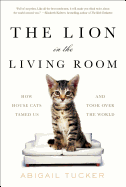
| Publisher: | Simon & Schuster | |
| Genre: | Animals, Pets, General, Anthropology, Social Science, Cats, Nature | |
| ISBN: | 9781476738239 | |
| Pub Date: | October 2016 | |
| Price: | $26 |
| Pets |
by Abigail Tucker
In accessible language, Tucker explores this mystery in depth, examining the connections humans have had with felines since ancient Egypt. Famous for their hunting abilities, cats were prized companions on long sea voyages, where they took care of the ever-present rat and mouse populations. Yet they became the hunted when they invaded the Pacific islands, including Australia, where the government is now providing research money for the discovery of an effective cat poison. Funny cat videos and photos pop up on social media on a daily basis, providing humorous relief for thousands. On the other hand, felines are also the only known host of the Toxoplasma parasite, which forms untreatable cysts in animal and human brain and muscle tissue and can be fatal. Although cats are a strange blend of good and bad, Tucker does an excellent job of providing facts so readers can make their own assessments. --Lee E. Cart, freelance writer and book reviewer
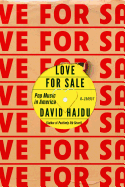
| Publisher: | Farrar, Straus & Giroux | |
| Genre: | Pop Vocal, General, Music, History & Criticism, Genres & Styles | |
| ISBN: | 9780374170530 | |
| Pub Date: | October 2016 | |
| Price: | $27 |
| Starred | Performing Arts |
by David Hajdu
Hajdu (Positively 4th Street) roams the pop music landscape, covering a dizzying array of musical trends, artists and technologies: wax cylinders, commercially produced sheet music, transistor radios, the Walkman, the MP3 file. He explores the ways in which pop music has always pushed the racial, sexual and societal envelope. He also draws on his interviews with many popular musicians, weaving in anecdotes of his years living in the Greenwich Village as a young music critic with a secret passion for disco.
Pop music, as Hajdu notes in his introduction, is "a phenomenon of vast scale and intimate effect." It is "a social art that works with every member of its enormous following in small, unique ways." Love for Sale will have music fans of all tastes and ages humming the nostalgic tunes of their youth, or scrolling through the latest digital music delivery service in search of the songs they once treasured. Pop music may be a crass commercial endeavor, but as Hajdu shows, it is also the food--and the lyrical expression--of love. --Katie Noah Gibson, blogger at Cakes, Tea and Dreams

| Publisher: | Delacorte | |
| Genre: | General, Romance, YOUNG ADULT FICTION, New Experience, Social Themes, Emotions & Feelings | |
| ISBN: | 9780553496680 | |
| Pub Date: | November 2016 | |
| Price: | $18.99 |
| Starred | Children's & Young Adult |
by Nicola Yoon
Nicola Yoon's The Sun Is Also a Star is a love story that feels timeless in its cosmic examination of what makes the human heart beat faster (think Keats) and yet is decidedly modern (think IKEA references and the word "ass" used as an adjective).
The novel--a finalist for the 2016 National Book Award for Young People's Literature--largely unfolds in the alternating first-person voices of two star-crossed lovers in New York. Seventeen-year-old high school senior Natasha Kingsley is a Jamaican-born black girl from Brooklyn. Daniel Bae, also 17, is the son of Korean immigrants and lives in Harlem. There are more than two sides to this story. Yoon (Everything, Everything) deepens her narrative with interruptions from an omniscient narrator who not only discusses multiverses, fate and the Jamaican word "irie," but also offers a lively chorus of perspectives.
Natasha first encounters Daniel in Manhattan on the day her family is scheduled to be deported. Daniel--on his way to a college admissions interview--spots Natasha with her "enormous, curly Afro and almost-as-enormous pink headphones" and follows her into a record store. Witty repartee ensues and sparks fly for the next 12 hours; that there's "something big" between them is undeniable. Despite his "poem-writing tendencies," science-minded Natasha likes this fine, funny, earnest boy way too much for a girl who's about to leave the country forever.
The Sun Is Also a Star--an exhilarating, hopeful novel exploring identity, family, the love of science and the science of love, dark matter and interconnectedness--is about seeing and being seen and the possibility of love... and it shines. --Karin Snelson, children's & YA editor, Shelf Awareness
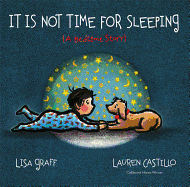
| Publisher: | Clarion | |
| Genre: | Boys & Men, Animals, Daily Activities, Bedtime & Dreams, Dogs, Health & Daily Living, Family, Juvenile Fiction, Parents | |
| ISBN: | 9780544319301 | |
| Pub Date: | November 2016 | |
| Price: | $16.99 |
| Children's & Young Adult |
by Lisa Graff, illust. by Lauren Castillo
How can it be time for sleeping already? The dish-soap bottle needs squeezing, the bathtub's rubber duck is calling and Jasper the dog's belly needs rubbing. A young boy never wants his good day to end in Lisa Graff's debut picture book, It Is Not Time for Sleeping.
His amiable parents drop not-so-subtle clues about their son's impending bedtime, but the boy resists: "When dinner is over,/ Dad runs water in the sink. I squeeze the soap and make bubbles./ 'It's getting dark,' he says, while he scrubs and scrubs./ 'It could be darker,' I tell him./ It is not time for sleeping." It's not time for sleeping even after the boy's toes get wrinkled in the bathtub, not after he dons his pajamas, "the bear ones with feet," not even when he's brushed his teeth upside-down with "top ones on bottom and bottoms on top." The story crescendos to a fun-to-read-aloud, "This is the house that Jack built"-style cumulative finale: "When dinner is over and the dishes are scrubbed and I'm squeaky-squeak clean and zipped up to my chin and my teeth are shiny and I've said goodnight to Jasper and I'm tucked tight in my bed and the story is done, Mom turns off the lights." Even then, there's still time for a hug... before... sleep.
Caldecott Honor artist Lauren Castillo (Nana in the City; Melvin and the Boy; The Troublemaker) makes a cozy story even cozier with her warm-toned, richly textured ink and watercolor illustrations. Thick, soft black lines echo the comforting solidity of this loving trio who've clearly been through this routine before. --Karin Snelson, children's & YA editor, Shelf Awareness
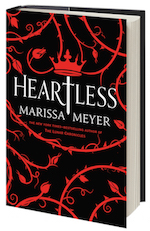
| Publisher: | Feiwel & Friends | |
| Genre: | General, Fairy Tales & Folklore, Adaptations, Romance, YOUNG ADULT FICTION, Fantasy | |
| ISBN: | 9781250044655 | |
| Pub Date: | November 2016 | |
| Price: | $19.99 |
| Children's & Young Adult |
by Marissa Meyer
The tiny and furious Queen of Hearts who shouts "Off with their heads!" was not always so angry.
In Heartless, an imagined prequel to Lewis Carroll's 150-year-old classic Alice's Adventures in Wonderland, Marissa Meyer (the Lunar Chronicles) introduces the Queen of Hearts as she was at the tender age of 18, when the King of Hearts, a giggling simpleton, is over the moon for her and for the scrumptious pastries she's famous for baking. The young, yet unmarried Queen of Hearts is Lady Catherine Pinkerton of the Kingdom of Hearts, but her friends call her "Cath."
Cath's moody mother, the Marchioness, thinks her daughter is lucky to have caught the eye of the King, but the loathsome match is unthinkable to Cath. Being Queen to that ridiculous royal with his curled mustache and clammy hands would quash any hope she might have of romance, passion, love--and wowing the kingdom with her mouthwatering baked goods; she's been dreaming for years of opening a bakery in town with her brilliant, numbers-minded best friend (and maid) Mary Ann. Cath is well aware of the societal obstacles: "Her mother would never approve of her only daughter, the heir to Rock Turtle Cove, going into the men's world of business, especially with a humble servant like Mary Ann as her partner." She remains undaunted.
But one night Cath's fantasies take another turn. She dreams of a "hazy, beautiful boy" with lemon-yellow eyes, and the next morning, a real-live lemon tree is growing in her bedroom. She harvests a few of the magical lemons to make three perfect tarts for the King's party, obviously not to charm the King but to further her reputation as a baker. (To say Cath is mad about pastry would be an understatement: "The tarts trembled for a moment more before falling still, flawless and gleaming.") That very night at the party, she meets the boy with the lemon-yellow eyes from her dream. He's the King's new court jester, a "Joker" named Jest, and he dazzles her with his wordplay and breathtaking tricks. "Why is a raven like a writing desk?" the handsome acrobatic jester asks the crowd at the King's party, while hanging from a spinning hoop attached to a chandelier. (That particular riddle has many, many answers, doled out throughout.) A shower of confetti, a wink from him, and Cath's new obsession is born. The story of the blossoming, forbidden romance between Cath and Jest is absolutely swoon-worthy, and their witty repartee and obvious chemistry make the suspenseful narrative sizzle. Of course, the relentless courtship of the ardent King, Cath's touch-and-go bakery dream, and the terrifying new threat of the dangerous Jabberwock, "a creature of nightmares and myth," fuel the fire as well.
Those who are well versed in Lewis Carroll's world of Alice will revel in how cleverly, seemingly effortlessly, Meyer works the beloved Wonderland characters into her story; it's always a delight when they pop up unexpectedly. As Meyer says, "All the time while writing this book, I was asking, 'Who is this character when Alice meets them, and how did they become that way?' " In Heartless, for instance, the sassy "half-invisible cat" Cheshire is Cath's friend (who would very much like a tuna tart) and the town cobbler is the hookah-smoking Caterpillar. (" 'Who,' he said lazily, 'are you?' ") Meyer's version of the Hatter's tea party ("not so much a tea party as a circus") is a dramatic, deliciously described tour de force in which Cath wins over an odd, tough crowd of porcupines, bumblebees and boa constrictors with her delectable macarons. Jest tells her, "...you're extra beautiful when you talk about baking. You know you're good at it, and that knowledge lights you up." (This flatters and flusters her, and has her once again cursing her fate as Queen.)
As Carroll does in Alice with the likes of Humpty Dumpty and Tweedledee and Tweedledum, Meyer pulls nursery rhymes into her story. For example, her spin on Peter Peter Pumpkin Eater (who had a wife and couldn't keep her) catapults Heartless into horror, a creepy subplot first only hinted at during the King's party when Peter Peter's pasty-faced, sickly and desperate wife asks Cath for pumpkin pastries with the intensity of a junkie needing a fix. Fans of Edgar Allan Poe's "The Raven" will be pleased to see glimpses of that poem, too, in the Raven's dialogue. It's to Meyer's great credit that the abundant literary allusions never overwhelm, they just liven up the recipe.
What begins as a witty, ingenious and charming romp through the mesmerizing world of Alice darkens and deepens until it grabs its readers by the throat. Will the brave, fierce Cath buckle and marry the King? Will she follow her heart? How many impossible things, as the White Queen says, can be believed before breakfast? Meyer's foray into Wonderland will unhinge hearts and drop jaws as it charms and chills. --Karin Snelson, children's & YA editor, Shelf Awareness